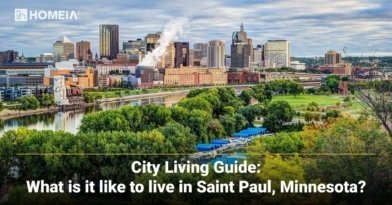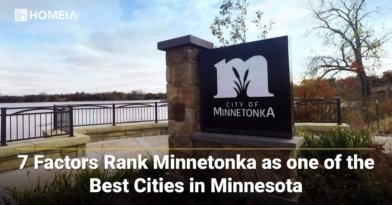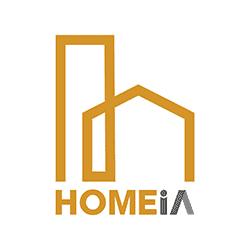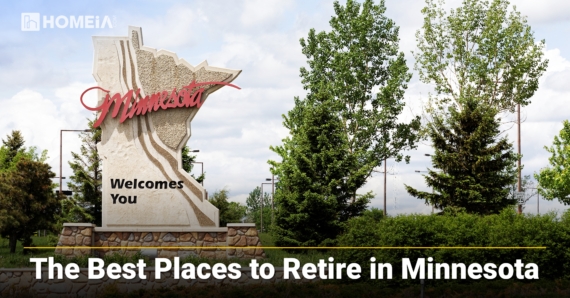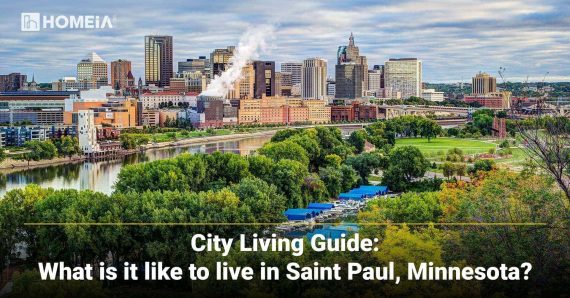Moving to Minnesota: THE Complete Relocation Guide and Checklist
- Local Editor:Local Editor: Ellie Vondracek
Published: Jul 14, 2025
- Category: City Living Guide

Are you thinking about making the move to Minnesota? The Land of 10,000 Lakes—and a whole lot more—is a special place. Whether you’re drawn to our strong job market, top-notch schools, or the promise of four seasons (yes, even winter!), you’ll find plenty to love here.
This comprehensive Minnesota moving guide is your one-stop resource for everything you need to know before you make the move, including a cost of living breakdown and a job market analysis to a description of the best places to live and how to settle in. Whether you’re considering the vibrant Twin Cities, an energetic college town like St. Cloud, a charming small town, Rochester’s healthcare hub, or the beautiful North Shore of Lake Superior, we’ll help you make an informed decision about your Minnesota relocation.
What is It Like Living in Minneapolis?
You may have heard stories (the good, the bad and the unbelievable!) and you’re intrigued with finding more information on the city and all its wonders. You’ve come to the right place. Here, we’ll discuss some of the common themes about Minneapolis for standard of living, climate…
Table of Contents:
- Why Choose Minnesota for Your Next Move?
- 1. What Is It Really Like to Live in Minnesota?
- 2. Cost of Living & Affordability in Minnesota
- 3. Jobs, Economy, and Career Opportunities
- 4. Education Excellence in Minnesota
- 5. Minnesota Tax Structure
- 6. Best Places to Live in Minnesota: Comprehensive City Guide
- 7. Planning Your Minnesota Move: Step-by-Step Timeline
- 8. Settling In: Practical Essentials for New Minnesota Residents
- 9. Minnesota’s Unique Rules and Requirements
- 10. Financial Planning and Budget Adjustment
- 11. Insider Tips from a Minnesota Local
- Summary: Your Minnesota Adventure Awaits
- Frequently Asked Questions About Moving to Minnesota
Why Choose Minnesota for Your Next Move?
Minnesota consistently ranks high against its peers, offering an exceptional combination of economic opportunity, educational excellence, and quality of life that’s hard to match anywhere else. The North Star State attracts thousands of new residents annually who are drawn by our strong economy, world-class healthcare systems, outstanding schools, and genuine community spirit.
What sets Minnesota apart is our commitment to work-life balance and community engagement. Despite being home to major Fortune 500 companies like Target, 3M, Best Buy, and General Mills, we maintain a down-to-earth culture where neighbors genuinely care about each other. The state’s investment in public infrastructure, parks, and services creates an environment where families can thrive and professionals can advance their careers while enjoying an exceptional quality of life.
How This Guide Helps You Relocate to Minnesota
| Topic | How This Guide Helps You |
| Research & Planning | Gives you the inside scoop on Minnesota cities, living costs, neighborhoods, and what to expect when you move. |
| Financial Preparedness | Helps you budget for the cost of living and get your finances ready for North Star State living. |
| Legal & Documentation | Walks you through residency requirements, vehicle registration, and essential paperwork you need. |
| Community Integration | Tips for making friends, finding local resources, and feeling at home in your new Minnesota neighborhood. |
| Ongoing Support | Answers your relocation questions and provides comprehensive checklists for every step of your Minnesota move. |
The Pros and Cons of Living in Minnesota
Pros and Cons of Living in Minnesota include more than cold winters and hockey. Enjoy scenic lakes, great schools, a strong economy, and rich cultural life. Whether you’re drawn by the outdoors or career opportunities, Minnesota offers a high quality of life with both urban excitement and small-town charm.
1. What Is It Really Like to Live in Minnesota?

A. Minnesota Culture & Lifestyle
Living in Minnesota means experiencing a unique blend of warmth, community, and resilience that defines the authentic Midwestern life. We’re famous for “Minnesota Nice”—a genuinely friendly, welcoming attitude that’s as real as the pristine lakes we cherish. Whether you’re in Minneapolis’s vibrant downtown, historic St. Paul neighborhoods, or a small farming community, you’ll find neighbors who look out for each other and maintain strong community bonds.
Our culture reflects diverse influences from Scandinavian, German, Irish, Hmong, Somali, and Native American communities, creating a rich cultural tapestry. Traditional potlucks, hotdish (that’s casserole to newcomers), and church basement gatherings remain part of everyday Minnesota life. We take pride in our heritage while embracing new ideas and welcoming people from all backgrounds.
B. Food Scene: Hotdish, Lefse, and Global Flavors
Minnesota’s culinary scene combines hearty comfort food traditions with diverse global cuisine reflecting our multicultural communities. Local favorites include hotdish, a creamy baked casserole that’s essential at potlucks and family gatherings. The beloved classic Tater Tot Hotdish features tater tots, ground beef, and cream of mushroom soup. Lefse represents our Norwegian heritage—a thin, soft flatbread often served with butter and sugar. Harvested by Native American communities, wild rice appears in traditional soups and side dishes. The famous Juicy Lucy, a cheese-stuffed burger invented in Minneapolis, remains a local culinary icon.
St. Paul, home of one of America’s largest Hmong communities, offers authentic pho, papaya salad, and traditional dishes at venues like Hmongtown Marketplace. The Twin Cities feature thriving craft beer scenes, farm-to-table restaurants, and diverse food halls like Midtown Global Market, where you can sample flavors from around the world.
What is It Like Living in St. Paul, MN?
This historic city has that and much more. It’s a beloved hometown for many with distinct neighborhoods, employment opportunity, dining and nightlife. In this article, we’ll discuss highlights for Saint Paul residents and guests regarding standard of living, housing, education, business, healthcare, weather and recreation…
C. Festivals, Music, and Arts
Minnesota boasts a vibrant arts and culture scene centered in the Twin Cities, home to world-class theaters, museums, and music venues. We’re proud of our musical heritage—Prince put Minneapolis on the global map, and the legendary First Avenue nightclub continues attracting top talent.
Major festivals define Minnesota culture. They include the renowned Minnesota State Fair, one of America’s largest state fairs; Aquatennial, Minneapolis’s summer celebration featuring parades, fireworks, and water sports; Hmong New Year festivities in St. Paul with traditional music, dance, and authentic cuisine; and St. Paul Winter Carnival, our snowy celebration featuring elaborate ice sculptures and winter parades.
D. Outdoor Life & Recreation
With more than 10,000 pristine lakes, endless forests, and miles of trail networks, Minnesota is an outdoor enthusiast’s paradise. Popular activities include boating and fishing on lakes of every size, from Lake Minnetonka to the legendary Boundary Waters Canoe Area Wilderness. The Twin Cities maintain some of America’s best urban park systems, while the scenic North Shore offers spectacular hiking along Lake Superior’s rugged coastline.
Winter recreation thrives with downhill skiing, cross-country skiing, ice fishing, snowmobiling, and ice hockey. Wildlife watching opportunities include bald eagles, common loons, white-tailed deer, and occasional moose sightings.
E. Weather & Climate
Minnesota experiences four distinct seasons with dramatic seasonal variations. Summers are warm and sunny, perfect for lake activities and outdoor festivals. Fall brings crisp temperatures and vibrant autumn colors throughout our forests. Winters can be genuinely cold with substantial snowfall, requiring proper preparation and winter clothing. Spring arrives gradually with blooming flowers and occasional late snowstorms.
Most Minnesotans embrace our seasonal variety and wouldn’t trade our climate for year-round warmth. The season offers unique recreational opportunities and stunning natural beauty. That said, winter preparedness is essential.
7 Key Factors You Should Consider Living in St. Louis Park, Minnesota
St. Louis Park is a great place to find a balance between the bustling energy of the city and the quiet, down-to-earth feel of a smaller town. This community of about 49,000 takes up about 11 square miles directly to the west of Minneapolis. It is part of the inner ring of suburbs…
2. Cost of Living & Affordability in Minnesota

Minnesota’s cost of living runs approximately 5% lower than the national average, with housing costs 16% below national averages and utilities 3% lower than most states. This affordability, combined with higher-than-average wages, creates excellent value for families and professionals.
A. Minnesota Housing Market Overview
The Minnesota housing market remains competitive, particularly in the Twin Cities metro area, but prices stay more affordable than many comparable metropolitan regions. The average home sale price in Minnesota is approximately $400,000 as of 2025, representing significant appreciation from $301,000 in 2020. Housing inventory remains tight, causing homes to sell quickly in desirable neighborhoods.
Here’s a comprehensive snapshot of typical housing costs in Minnesota’s most popular cities:
| City/Region | Median Home Price | 1BR Rent | 2BR Rent | 3BR Rent (Apartment) | 3BR Rent (House) |
| Minneapolis | $350,000+ | $1,200 | $1,600 | $2,000–$2,400 | $2,500–$3,500 |
| St. Paul | $300,000+ | $1,100 | $1,500 | $1,900–$2,300 | $2,400–$3,200 |
| Rochester | $300,000+ | $1,000 | $1,400 | $1,800–$2,200 | $2,300–$3,000 |
| Duluth | $250,000+ | $900 | $1,300 | $1,700–$2,100 | $2,200–$2,900 |
| St. Cloud | $240,000+ | $850 | $1,200 | $1,600–$2,000 | $2,100–$2,800 |
B. Utilities and Daily Living Expenses
Minnesota utilities remain affordable, with average monthly costs for single-family homes around $367 including electricity, natural gas, water, internet, and cable. Typical apartment utility costs average $171 monthly for basic services. Electricity averages $98 monthly, natural gas costs $54, water runs $70, and internet service costs approximately $61 per month.
C. Groceries and Transportation Costs
Groceries cost about 3% higher than national averages, but abundant local markets and farm stands provide fresh, affordable produce options. Transportation costs stay 4% below national averages, with gas prices typically ranging $3.00–$3.50 per gallon.
The Twin Cities offer excellent public transportation through comprehensive bus networks and light rail systems connecting downtown areas, suburbs, and Minneapolis-St. Paul International Airport. Seven-day unlimited transit passes cost $24; single rides start at $2.
Recommended for you
3. Jobs, Economy, and Career Opportunities

Minnesota’s economy remains strong and diverse, featuring low unemployment rates and multiple career opportunities across a variety of sectors. The Twin Cities unemployment rate ranks among America’s lowest, with statewide unemployment at approximately 3.3%, well below national averages.
A. Major Industries and Employment Sectors
Minnesota’s diversified job market is led by healthcare, anchored by the world-renowned Mayo Clinic in Rochester and major hospital systems throughout the state that consistently hire medical professionals. Technology continues growing in the Twin Cities, home to major corporations like 3M, Best Buy, Target, and emerging tech startups. Manufacturing remains strong, from medical device production to food processing companies that employ thousands statewide.
Agriculture represents a significant economic sector, with Minnesota ranking among top producers of corn, soybeans, sugar beets, and dairy products. Education provides stable employment through top universities, strong public school systems, and private educational institutions throughout the state.
B. Metropolitan Job Markets and Economic Centers
| Metro Area | Key Industries | Notable Major Employers |
| Minneapolis-St. Paul | Healthcare, technology, finance, education, manufacturing | Mayo Clinic, 3M, Best Buy, Target, General Mills, Medtronic |
| Rochester | Healthcare, education, technology | Mayo Clinic, IBM, Rochester Public Schools, University of Minnesota Rochester |
| Duluth | Healthcare, education, tourism, shipping | Essentia Health, University of Minnesota Duluth, Cirrus Aircraft |
| St. Cloud | Healthcare, manufacturing, education, retail | CentraCare Health System, Coborn’s, St. Cloud State University |
The Twin Cities serve as Minnesota’s economic engine, but excellent healthcare, education, and manufacturing opportunities exist throughout the state. Remote work popularity continues growing and is supported by strong internet infrastructure.
7 Factors Rank Minneapolis as one of the Best Cities in Minnesota
It is well known as one of the Twin Cities, sharing that moniker with another of the oldest cities in the state: St. Paul. These cities originally served as home to Native Americans along the Mississippi River and later grew as centers for river trade, logging and four mills. This…
4. Education Excellence in Minnesota

Minnesota maintains a strong reputation for educational excellence, featuring high-performing public schools and prestigious higher education institutions that attract students nationwide.
A. Public School System Performance
Minnesota’s public schools consistently rank among America’s best, though recent years have seen some challenges. The state currently ranks 19th nationally in education, down from 10th in 2019, but still significantly above average. Reading and mathematics scores remain strong, and many districts offer advanced programs, extensive extracurricular activities, and innovative educational approaches.
B. Higher Education Institutions
Minnesota houses nearly 200 post-secondary institutions providing diverse educational opportunities. The University of Minnesota system includes campuses in Minneapolis-St. Paul, Duluth, Morris, Crookston, and Rochester. Minnesota State Colleges and Universities operate 37 public universities and colleges across the state, ensuring accessible higher education statewide.
Distinguished private universities include the University of St. Thomas, Hamline University, Carleton College, and Macalester College, offering excellent liberal arts and professional programs. Whether seeking large research universities or intimate liberal arts colleges, Minnesota provides options for every student’s educational goals.
7 Factors Rank Minnetonka as one of the Best Cities in Minnesota
Minnetonka, Minnesota is an attractive midwestern city for people of all ages located 10 minutes west of Minneapolis. The city has much to offer for families, singles and seniors—and all within a short distance of the amenities of the Twin Cities metro…
5. Minnesota Tax Structure

Minnesota’s tax structure features graduated rates designed to fund excellent public services and infrastructure. State income tax ranges from 5.35% to 9.85% depending on income levels. Sales tax totals 6.875% on most goods, with exemptions for food, clothing, and essential services. Property tax averages approximately 1.05% effective rate, slightly above national averages.
While Minnesota taxes are higher than some states, residents receive exceptional value through outstanding schools, safe communities, well-maintained infrastructure, and comprehensive public services that enhance quality of life.
6. Best Places to Live in Minnesota: Comprehensive City Guide

A. Minneapolis: Urban Sophistication and Lake Life
Minnesota’s largest city, Minneapolis combines vibrant urban amenities with easy access to lakes and outdoor recreation. The city offers a strong job market across multiple industries, incredible cultural diversity, excellent public and private schools, and easy access to outdoor activities including the famous Chain of Lakes.
Advantages include employment opportunities, world-class arts and culture scene, diverse neighborhoods, and extensive park systems. Considerations include higher housing costs in popular neighborhoods and harsh winter weather requiring preparation.
B. St. Paul: Historic Charm and Community Spirit
St. Paul, Minnesota’s historic capital city, features beautiful architecture, strong neighborhood communities, and rich cultural heritage. The city offers more affordable housing than Minneapolis, family-friendly environments, stunning historic architecture, and excellent school systems.
Advantages include reasonable cost of living, strong community connections, and beautiful historic neighborhoods. Considerations include fewer nightlife options compared to Minneapolis and cold winter climate.
The 5 Best Places to Live in Minneapolis, MN
In a city this big, it can be difficult to decide where to live. After all, Minneapolis has 83 residential neighborhoods, each with its own personality. To give you a starting point, this article will introduce you to 5 of the best neighborhoods to live in within the city of Minneapolis…
C. Rochester: Healthcare Hub and Quality of Life
Rochester serves as a global healthcare destination, home to the internationally renowned Mayo Clinic. The city provides excellent healthcare employment opportunities, outstanding schools, safe neighborhoods, and a growing, stable economy.
Advantages include world-class healthcare facilities, excellent educational opportunities, family-friendly communities, and economic stability. Considerations include smaller city atmosphere and harsh winter weather.
D. Duluth: Outdoor Adventure and Lake Superior Views
Offering spectacular Lake Superior views, Duluth serves as the gateway to Minnesota’s scenic North Shore. The city has stunning natural beauty, multiple outdoor recreation opportunities, affordable housing options, and access to wilderness areas.
Advantages include breathtaking scenery, extensive outdoor activities, reasonable housing costs, and small-city charm. Considerations include colder winter temperatures and a smaller job market compared to the Twin Cities.
E. St. Cloud: College Town and Affordable Living
St. Cloud combines affordable living with college town energy, featuring St. Cloud State University and growing economic opportunities. The city offers very affordable housing, good public schools, and a developing economy.
Advantages include low cost of living, educational opportunities, and friendly community atmosphere. Considerations include smaller city size and cold winter climate.
Recommended for you
7. Planning Your Minnesota Move: Step-by-Step Timeline

| Timeline | Essential Tasks | Detailed Actions |
| 8-12 Weeks Before | Research & Initial Planning | Research cities, neighborhoods, school districts, job markets; calculate comprehensive moving costs; research tax implications |
| 6-8 Weeks Before | Documentation & Logistics | Gather important documents; research and book moving companies; begin packing non-essential items; research pet transportation requirements |
| 4-6 Weeks Before | Service Arrangements | Schedule utility connections; research auto insurance; notify current providers; arrange mail forwarding |
| 2-4 Weeks Before | Final Preparations | Confirm moving details; prepare essentials boxes; clean current home; arrange temporary lodging if needed |
| Moving Week | Execution & Setup | Execute move; conduct final walkthrough; travel to Minnesota with essentials |
| Upon Arrival | Official Transitions | Set up utilities; register vehicle within 60 days; obtain Minnesota driver’s license; enroll children in schools |
=> Get the Relocation Guide & Checklist PDF — prepared for both Desktop and Mobile devices.
Minnesota Vehicle Registration, Licensing, and Voter Registration
🚗 Vehicle Registration & Licensing in Minnesota
Vehicle Registration | Requirement | Details | Cost/Timeline |
|---|---|---|---|
| Registration Deadline | Register within 60 days of establishing residency | Applies to passenger vehicles, motorcycles, utility trailers, house trailers; Commercial vehicles and expired registrations must register immediately | Within 60 days to avoid penalties; immediate for commercial |
| Emissions & Safety Testing | No statewide emissions or safety testing requirements | Minnesota does not require emissions inspections or safety inspections for any vehicles | N/A – No testing required |
| Insurance Requirements | Proof of Minnesota no-fault insurance required | Must provide insurance company name, policy number, and expiration date; Minnesota No-Fault Act compliance required | Required at time of registration |
| Out-of-State Vehicles | Must obtain title & register once resident | Submit out-of-state title or most recent registration card (if not expired >1 year), current odometer reading, insurance proof | Within 60 days of residency |
| Application Process | Complete Application to Title/Register Vehicle form (available online or at office) | Form + title/registration + insurance + identification + odometer reading + payment | Submit at deputy registrar office or mail to DVS |
| Registration Fees | Annual registration tax based on vehicle age, value, and type | Passenger vehicles: minimum $30 for 10+ years old; $75 annual surcharge for electric vehicles; fees vary by vehicle class | Annual renewal for month must be displayed on plates |
🪪 Driver’s License Transfer in Minnesota
Driver’s License Transfer | Requirement | Details | Timeline/Notes |
|---|---|---|---|
| Grace Period | Up to 60 days to drive on out-of-state license | Valid out-of-state license accepted while transferring; CDL holders have only 30 days | 60 days for regular licenses, 30 days for commercial |
| Testing Requirements | Knowledge and vision tests REQUIRED for ALL transfers | Required for all out-of-state transfers regardless of origin; road test also required if previous license expired >1 year | No exemptions for any state/country transfers |
| Required Documents | Valid ID, SSN, proof of MN residency | Current out-of-state license (will be invalidated and returned); two forms of identification for standard license | Originals or certified copies required |
| License Options | Standard, REAL ID, or Enhanced driver’s license | Standard: $46; REAL ID: $46; Enhanced: $61; choose based on federal compliance and travel needs | Deadline to transfer to REAL ID passed on May 7, 2025 |
| License Surrender | Must surrender previous license | Out-of-state license will be invalidated (hole-punched) and returned to applicant | Completed during Minnesota license issuance |
| Testing Languages | Multiple languages and ASL available | English, Hmong, Karen, Vietnamese, Somali, Spanish, Russian, American Sign Language | Computerized tests available at exam stations |
| Application Process | Must apply in person at DVS office | Online pre-application available to expedite process; appointment scheduling recommended | One test per day limit; $10 fee for subsequent failed attempts |
🗳️ Voting & Voter Registration in Minnesota
Current Registration Requirements | Requirement | Details | Timeline |
|---|---|---|---|
| Registration Deadline | Multiple deadlines: 21 days advance OR same-day registration | Online: 11:59 PM, 21 days before Election Day; Paper: 5:00 PM, 21 days before; Same-day: at polling place or early voting location | Advance registration processed immediately; same-day requires proof of residence |
| Registration Methods | Online, mail, in-person, or same-day at polls | Online requires MN driver’s license/ID number or last 4 SSN digits; same-day requires proof of residence (vouching system available) | Available anytime before Election Day; same-day during early voting (46 days) or Election Day |
| Eligibility Criteria | U.S. citizen, 18+ by Election Day, MN resident 20 days before election, not currently incarcerated for felony | Pre-registration available at 16-17; guardianship doesn’t disqualify unless court specifically revokes voting rights; felony rights restored upon release | Continuous compliance required; automatic removal if no voting activity for 4 years |
| Automatic Registration | Available when getting state-issued ID/license or updating address | Automatically registers eligible residents applying for/renewing MN driver’s license or ID; USPS address changes trigger updates | County auditor verifies eligibility and sends confirmation; can decline registration |
| Voting Methods | No-excuse absentee, early voting, Election Day voting | Absentee ballots available 46 days before election; early in-person voting also begins 46 days before; permanent absentee list available | Absentee deadline: day before Election Day; witness signature required |
⚖️ Recent & Enacted Legislative Changes in Minnesota
Enacted Legislation | Summary | Effective Date/Status | Impact |
|---|---|---|---|
| Restore the Vote Act (HF28/SF26) | Restores voting rights to individuals with felony convictions who are living in the community (on parole, probation, or supervised release) | Enacted March 25, 2023; Effective July 1, 2023 | Restored voting rights to approximately 55,000 Minnesotans previously excluded due to felony convictions |
| Democracy for the People Act Package (HF3) | Comprehensive voting reforms including 16-17 year old pre-registration, enhanced automatic registration, multilingual ballot improvements, election security enhancements | Enacted May 2023; Implemented 2024 elections | Expanded voter access and modernized election processes; strengthened election integrity |
| Absentee/Early Voting Expansion (2023) | Extended early voting period to begin 46 days before elections (up from 18 days); streamlined absentee ballot request and processing | Effective for 2024 election cycle | Significantly longer voting window; enhanced voter convenience and accessibility |
| Permanent Absentee Voting List (2023) | Allows any voter to sign up for permanent absentee ballot status; automatic ballot mailing for future elections | Available starting 2024 elections | Streamlined process for regular mail voters; reduced administrative burden |
📝 Important Notes for Minnesota New Residents
Critical Timeline Differences
- Vehicle Registration: 60 days (immediate for commercial vehicles)
- Driver’s License: 60 days (30 days for CDL)
- Voter Registration Residency: 20 days before Election Day
Testing Requirements for License Transfer
Unlike many states, Minnesota requires ALL out-of-state license transfers to take knowledge and vision tests, regardless of where the previous license was issued.
Same-Day Voter Registration
Minnesota offers robust same-day voter registration at polling places and early voting locations, requiring proof of residence through various methods including vouching by registered voters.
Unique Minnesota Features
- No party registration: Minnesota has open primaries
- Permanent absentee voting: Available for all voters
- 46-day early voting period: One of the longest in the nation
- Automatic registration: Through state ID/license applications
Last Updated: July 2025 – Based on enacted 2023-2024 Minnesota legislation
8 Best Cities for Buying a House and Raising a Family in Minnesota
While everyone in Minnesota shares accesses to the great outdoors, four distinctly enjoyable seasons, and a friendly Midwestern vibe, each community has its own personality. Here are our views of the Top 8 Cities for family life in Minnesota. With a variety of personalities and attractions…
8. Settling In: Practical Essentials for New Minnesota Residents

A. Utilities and Essential Services Setup
Minnesota utilities are managed by reliable providers, including Xcel Energy and CenterPoint Energy for electricity and natural gas, municipal water systems, and internet options like Comcast, CenturyLink, and local providers.
| Utility/Service | Provider Type | Typical Monthly Cost | Setup Notes |
| Electricity | Public/Private (Xcel Energy) | $98 | Renewable energy options available |
| Natural Gas | Public/Private (CenterPoint) | $54 | Varies by region and season |
| Water/Sewer | Municipal | $70 | Billed quarterly or annually |
| Internet/Cable | Private providers | $61 | Multiple high-speed options available |
B. Legal Requirements and Official Documentation
Minnesota requires new residents to register vehicles and obtain driver’s licenses within 60 days of establishing residency. You’ll need to update addresses with banks, insurance companies, and other important service providers.
| Requirement | Deadline/Details | Important Notes |
| Vehicle Registration | Within 60 days of residency | Safety inspection required; bring title, insurance, ID |
| Driver’s License | Within 60 days of residency | Written and road tests may be required |
| Voter Registration | As soon as possible | Can be completed online at mnvotes.org |
| Address Updates | Immediately upon moving | Notify all banks, insurance, and service providers |
C. Community Integration and Building Social Networks
Minnesotans are genuinely friendly and welcoming to newcomers who show interest in community involvement. Join local clubs, attend neighborhood events, volunteer for community organizations, and participate in seasonal festivals to build new friendships and feel at home quickly.
The 15 Budget Friendly Towns in Minnesota for Retirees
The cost of living in Minnesota varies by location and is highest in its large metro areas, but on the whole, it compares well to the coasts and to big cities. Each community in Minnesota has its own personality, and here we will introduce you to 15 of the best options for retiring in the North Star State…
9. Minnesota’s Unique Rules and Requirements

A. Vehicle Registration and Safety Standards
Minnesota requires vehicle registration within 60 days of establishing residency. Most vehicles need safety inspections, and some counties require emissions testing to maintain air quality standards. Bring vehicle title, proof of insurance, and identification to complete registration efficiently.
B. Residency Establishment and Documentation
You’re considered a Minnesota resident after living here more than six months annually. Establish residency earlier by renting or purchasing property, obtaining Minnesota employment, registering to vote, or enrolling children in Minnesota schools. Maintain documentation proving your residency intent.
4 Best Places to Live in Minnesota
Bordering Canada and the Great Lakes is a state fondly dubbed as the “North Star State” and “Land of 10,000 Lakes.” The state has a lot of lakes sprawled across its more than 86,000 square mile area. In a comprehensive study of cities, Minnesota is the number one state for raising a family because of its high median income, affordable cost of living and exceptional education services…
10. Financial Planning and Budget Adjustment

A. Cost of Living Comparison
Minnesota living costs approximately 5% below national averages, primarily due to affordable housing and utilities. Grocery costs run slightly higher, but transportation and healthcare expenses remain lower than national benchmarks.
B. Creating a Minnesota-Adjusted Budget
| Expense Category | Estimated Cost Range | Planning Notes |
| Professional Moving Costs | $1,000–$10,000+ | Varies by distance and services |
| Security Deposits | 1–2 months’ rent | First month, last month, security deposit |
| Utility Setup Fees | $100–$300 | Connection fees for utilities |
| Emergency Fund | 3–6 months’ expenses | Important for seasonal employment variations |
11. Insider Tips from a Minnesota Local

- Embrace the Seasons: Winter is long but beautiful. Try ice skating, skiing, snowshoeing, and other winter activities to enjoy the season fully.
- Explore the Outdoors: Minnesota’s parks, lakes, and trails rank among the United States’ best. Take advantage of our incredible natural resources year-round.
- Get Involved: Join local clubs, volunteer opportunities, or neighborhood events. You’ll make friends and feel at home faster in Minnesota’s welcoming communities.
- Prepare for Winter: Invest in quality winter clothing, boots, and snow removal equipment. Proper preparation makes winter much more enjoyable.
- Shop Local: Support farmers markets and local businesses for fresh, delicious food and unique gifts while supporting the community.
Summary: Your Minnesota Adventure Awaits
Ready to make the move to the North Star State? Minnesota offers a special combination of economic opportunity, educational excellence, natural beauty, and genuine community spirit that creates an unmatched quality of life. Whether you’re looking for career advancement, outstanding schools for your family, outdoor recreation, or simply a welcoming community, you’ll find it in the Land of 10,000 Lakes.
From our world-class schools and healthcare systems to our thriving cities and pristine natural landscapes, Minnesota provides opportunities and experiences for everyone. We can’t wait to welcome you home to Minnesota!
Recommended for you
Frequently Asked Questions About Moving to Minnesota
1. Do I Need a Car in Minnesota? You can live comfortably without a car in the Twin Cities thanks to excellent public transit, but suburban and rural areas typically require personal vehicles for daily transportation.
2. How Safe Is Minnesota Compared to Other States? Minnesota is generally very safe, especially in suburban and rural communities. Urban neighborhoods vary, so research specific areas before choosing where to live.
3. What Are the Biggest Challenges for Minnesota Newcomers? Adjusting to harsh winter weather, building new social networks, and understanding local customs can be challenging at first. Most newcomers adapt quickly and love Minnesota life.
4. How Much Money Should I Budget for Moving to Minnesota? Plan $1,000–$10,000+ for professional moving costs depending on distance. Budget for security deposits, utility connections, and emergency funds for unexpected expenses.
5. Is Minnesota Really as Family-Friendly as People Say? Absolutely! Minnesota neighborhoods are safe, schools are excellent, and countless family activities are available year-round including lakes, parks, festivals, and sports.
6. What’s the Weather Really Like in Minnesota? Minnesota experiences four distinct seasons: warm, sunny summers; cold, snowy winters; and beautiful spring and fall transitions with spectacular colors.
7. What Steps Must I Take After Moving to Minnesota? Register your vehicle, obtain a Minnesota driver’s license, update your address with all providers, and enroll children in school. Notify banks and insurance companies immediately.
8. What Are the Pros and Cons of Minnesota’s Tax Structure? Minnesota taxes are higher than some states, but residents benefit from strong public schools, infrastructure, and services. Most people find the value worthwhile for a high quality of life.
9. Do Minnesotans Really Say “You Betcha”? Sometimes! “Minnesota Nice” is genuine, and you’ll hear friendly phrases like “you betcha” and “oh, for sure” that reflect our welcoming culture.
10. How Do I Establish Residency in Minnesota? You become a Minnesota resident after living here more than six months annually, or earlier by renting/buying property, obtaining employment, registering to vote, or enrolling children in school.
7 Factors That Make North Mankato one of The Most Affordable Cities in Minnesota
North Mankato is a small town in southern Minnesota that appeals to people of all ages. Because it lies along the banks of the Minnesota River, it provides a scenic backdrop for the everyday activities of residents and visitors. The town ranks well for education, healthcare, housing and a lower-than-expected cost of living…
Table of Contents:
- Why Choose Minnesota for Your Next Move?
- 1. What Is It Really Like to Live in Minnesota?
- 2. Cost of Living & Affordability in Minnesota
- 3. Jobs, Economy, and Career Opportunities
- 4. Education Excellence in Minnesota
- 5. Minnesota Tax Structure
- 6. Best Places to Live in Minnesota: Comprehensive City Guide
- 7. Planning Your Minnesota Move: Step-by-Step Timeline
- 8. Settling In: Practical Essentials for New Minnesota Residents
- 9. Minnesota’s Unique Rules and Requirements
- 10. Financial Planning and Budget Adjustment
- 11. Insider Tips from a Minnesota Local
- Summary: Your Minnesota Adventure Awaits
- Frequently Asked Questions About Moving to Minnesota
Ellie Vondracek is an educator, writer, and curriculum developer from the Land of 10,000 Lakes (Minnesota). One of her favorite places in Minnesota is the beautiful Itasca State Park, where she loves walking across the headwaters of the Mississippi River.
HOMEiA is a city guide site where visitors can find detailed information about communities of interest. HOMEiA’s City Guides, created in partnership with local writers and editors, are curated lists of the best, safest, and most affordable places to live. The guides feature the HOMEiA Score, a proprietary index that rates communities on such factors as housing costs, education, employment, etc.
HOMEiA.com aims to be the premier site for people planning to relocate, providing them with insightful content and connecting them with skilled real estate professionals.
We also empower real estate professionals to establish or strengthen their web presence by highlighting their experience, knowledge and achievements. If you’re selected to join our list of certified real estate professionals, you will distinguish yourself from your peers — and earn HOMEiA’s support.
If you believe in HOMEiA’s mission, please share our website with others.
Table of Contents:
- Why Choose Minnesota for Your Next Move?
- 1. What Is It Really Like to Live in Minnesota?
- 2. Cost of Living & Affordability in Minnesota
- 3. Jobs, Economy, and Career Opportunities
- 4. Education Excellence in Minnesota
- 5. Minnesota Tax Structure
- 6. Best Places to Live in Minnesota: Comprehensive City Guide
- 7. Planning Your Minnesota Move: Step-by-Step Timeline
- 8. Settling In: Practical Essentials for New Minnesota Residents
- 9. Minnesota’s Unique Rules and Requirements
- 10. Financial Planning and Budget Adjustment
- 11. Insider Tips from a Minnesota Local
- Summary: Your Minnesota Adventure Awaits
- Frequently Asked Questions About Moving to Minnesota



